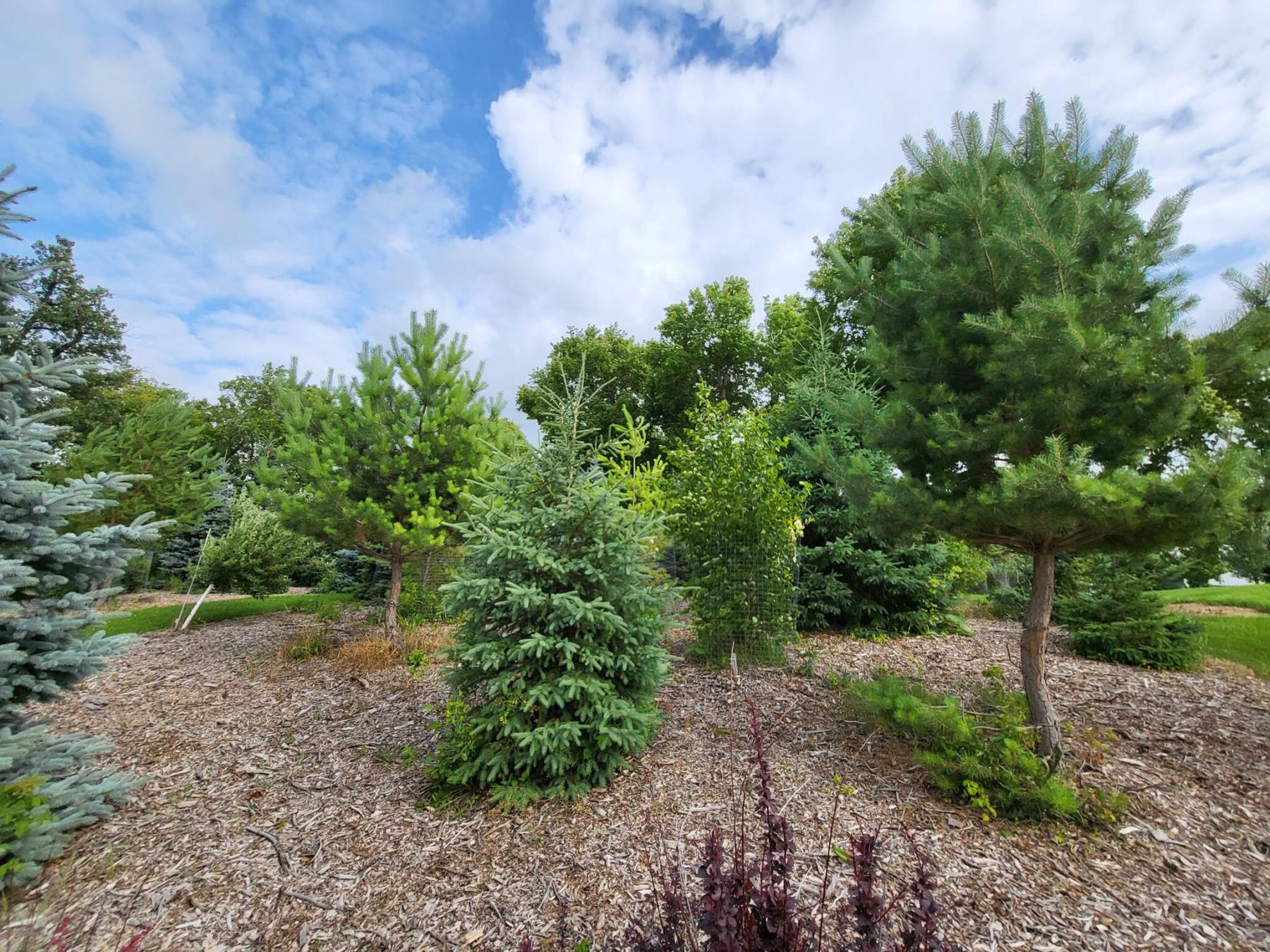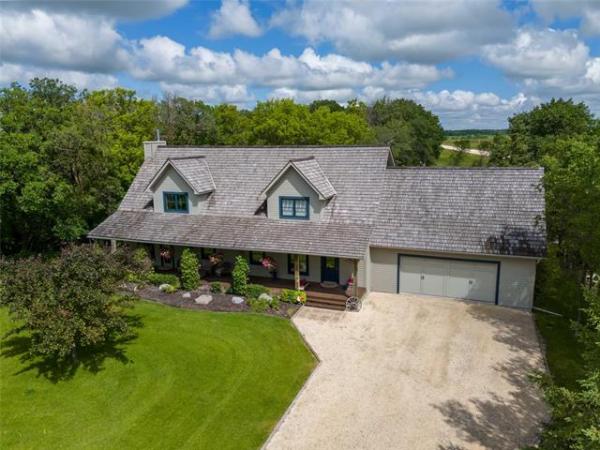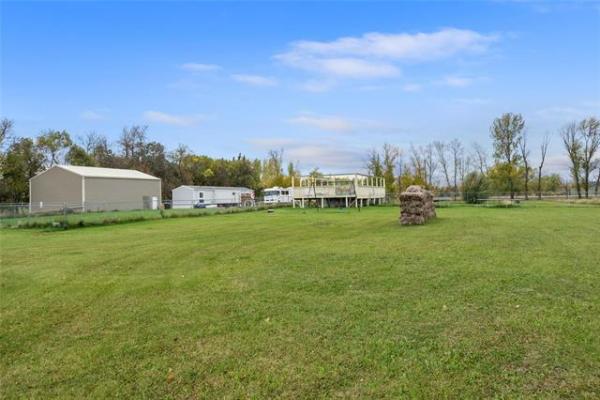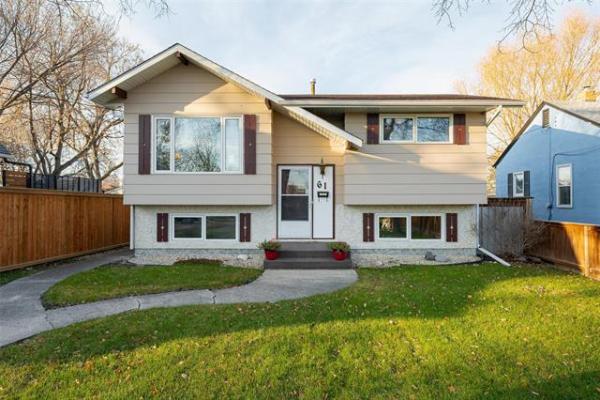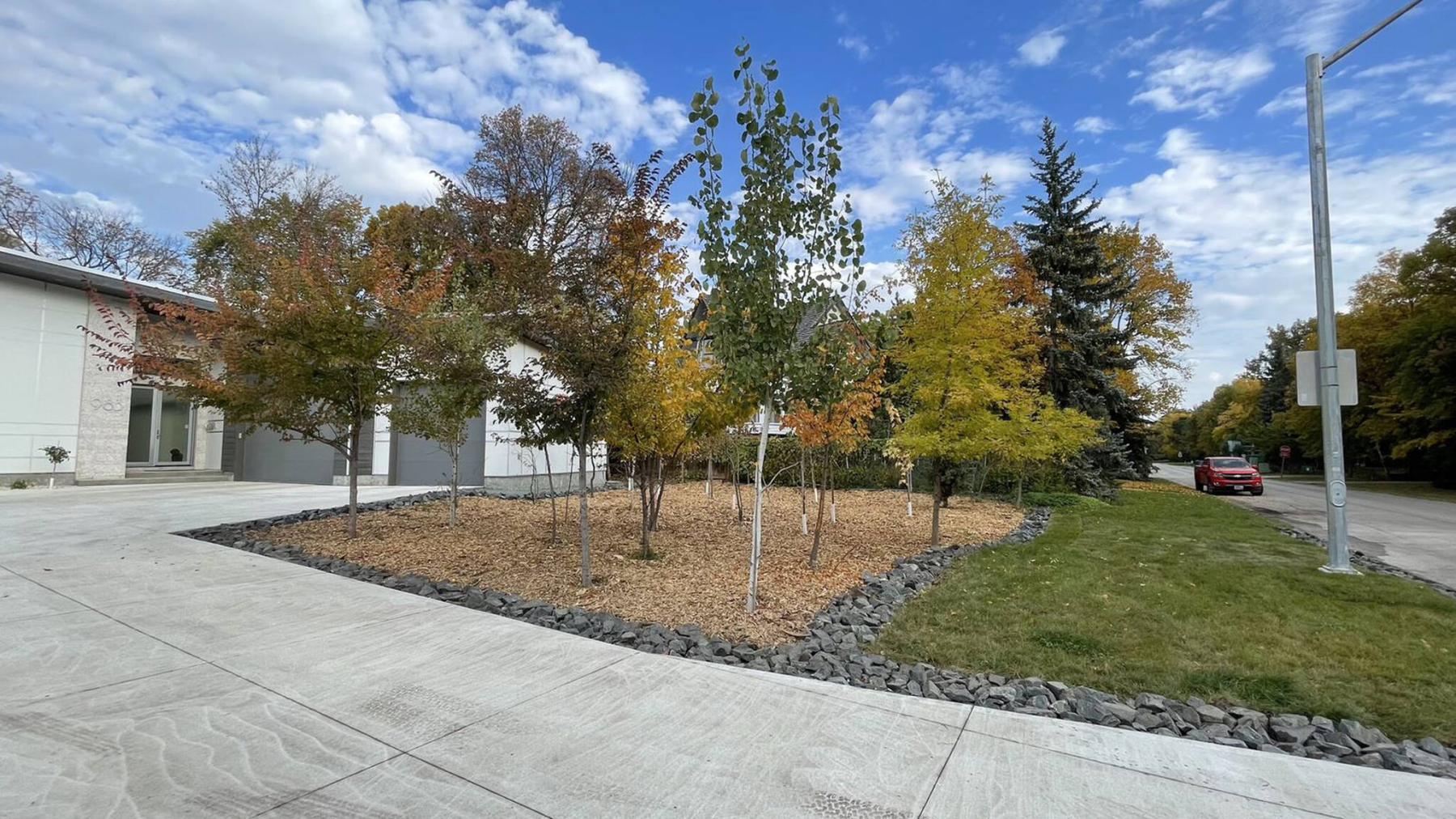
Dom Costantini
After planting a mini-forest in his front yard, Winnipegger Dom Costantini plans to add an understory layer of small fruit shrubs.
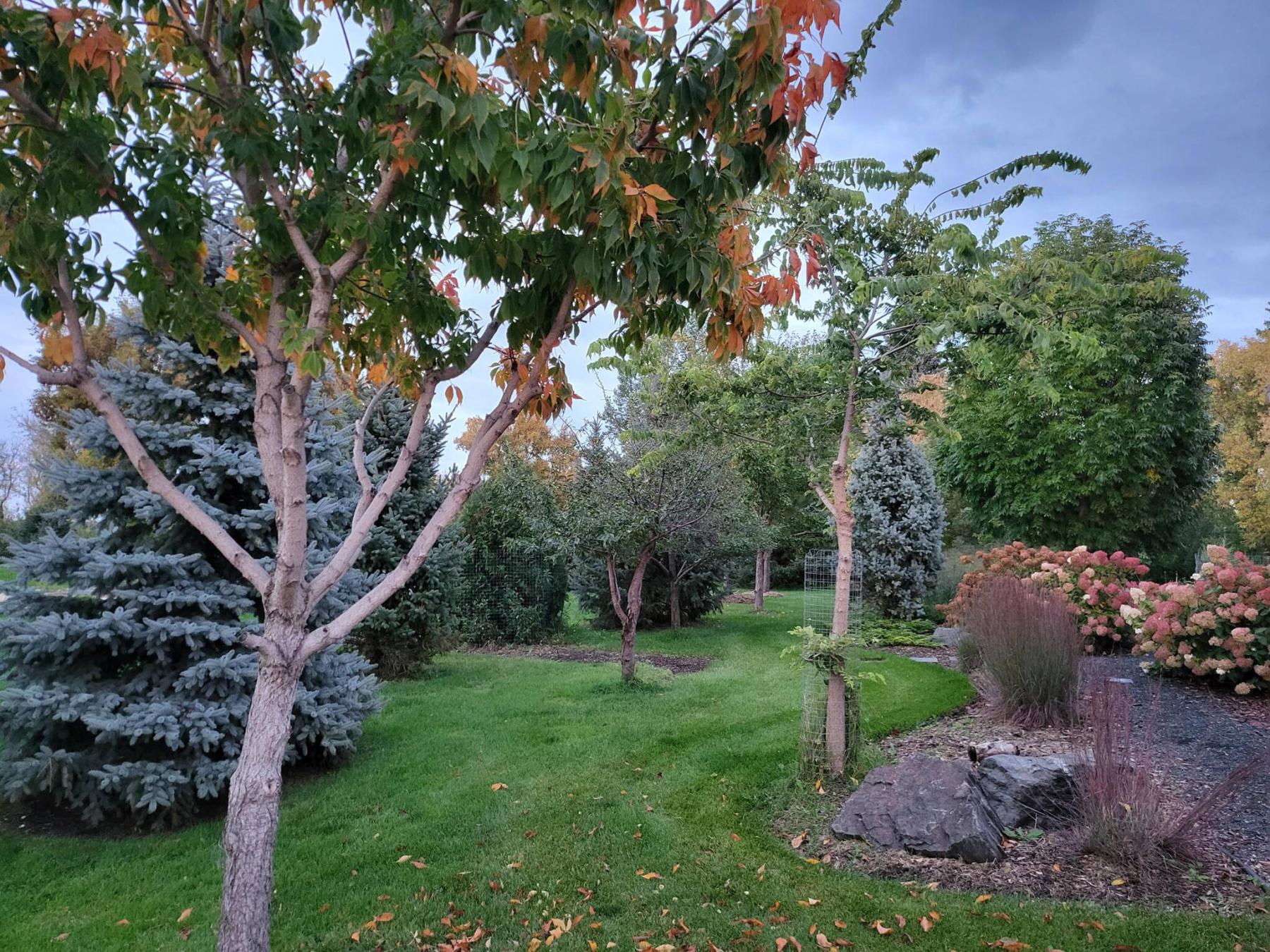
Darren Murphy
Darren Murphy’s mini forest in LaSalle consists of more than 500 trees and 80 different species.
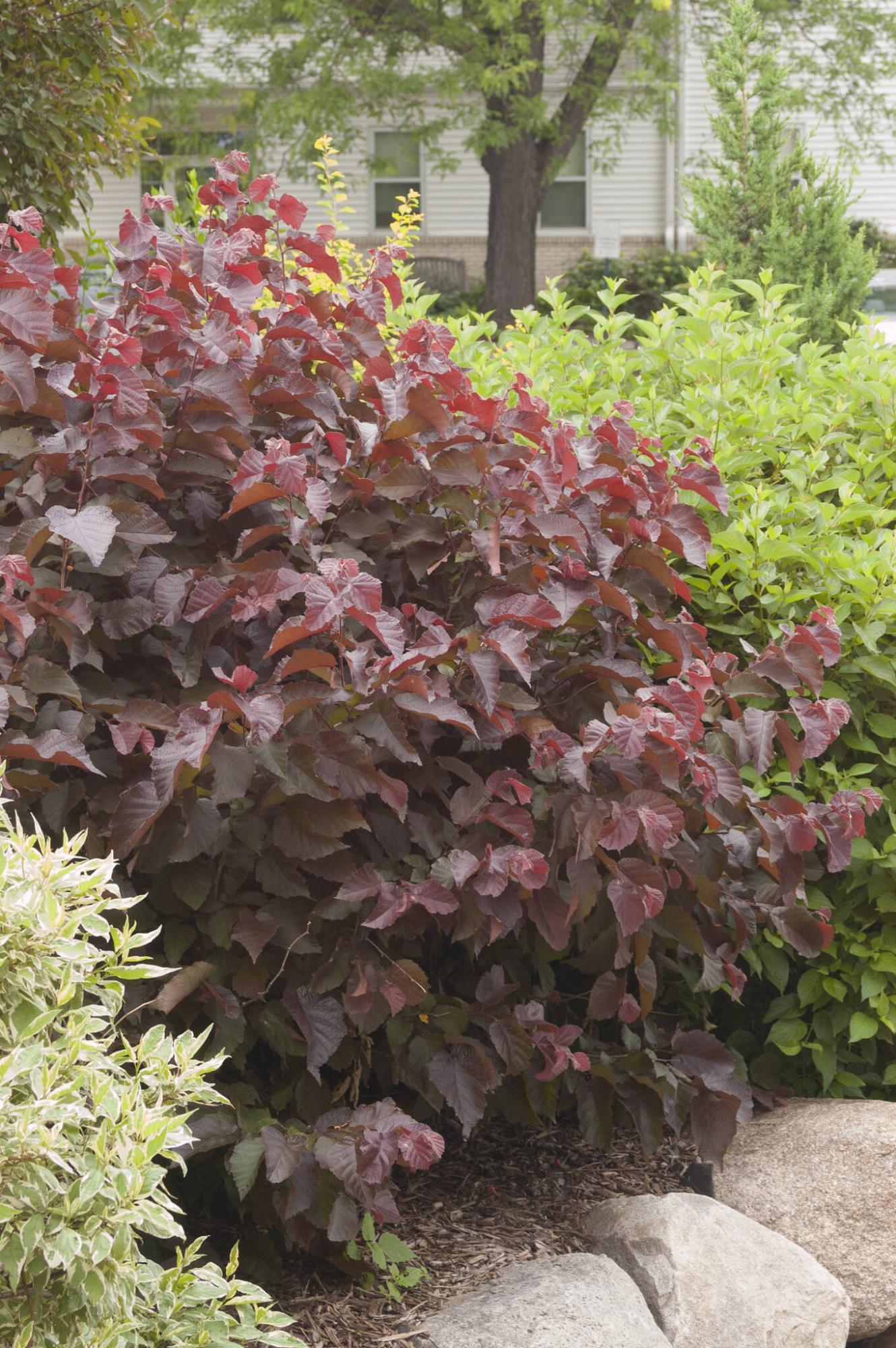
Bailey Nurseries
Purple Leaf Bailey Select American Hazelnut with edible nuts and fall colour is an excellent understory shrub.
Dom Costantini and Darren Murphy have never met but both men have much in common. Both are successful business people – Costantini is a leader in the construction industry and Murphy is a pharmacist-owner who commutes back and forth to Winnipeg daily. Both are homeowners – Costantini lives in south Winnipeg and Murphy lives on five acres in LaSalle. Both built and designed their own houses, and both have a vision for rewilding their landscapes by planting their own mini forests.
If their properties were transplanted to Europe where tiny forests are all the rage, their innovative approach to designing their landscapes would not strike their neighbours as unconventional. In many places around the world, mini forests consisting of small, dense, diverse tree plantings that include an understory of shrubs and groundcovers are springing up on private and public properties. It is a movement inspired by the Miyawaki Method which is named after Akira Miyawaki, a Japanese botanist. The method mimics the multi-layered, locally adapted dense plantings of a natural forest. Not only is planting density a key factor, but so too is tree species diversity, underplanting with shrubs that provide habitat and food for wildlife, and a mulch layer.
But while the Miyawaki Method is the inspiration behind planting trees densely, enthusiasts including homeowners, communities, schools, and cities also use the terms mini forests, tiny forests, micro-forests, or pocket forests. For Costantini and Murphy – neither of whom were familiar with the Miyawaki Method when I first talked to them – it was more about their innate desire to plant trees in a way that emulated a natural forest setting.
Planting trees densely in an urban residential setting raises eyebrows. It’s not what the neighbours expect. There are bound to be questions. Where are the flower beds and the traditional grass lawn? Let’s go first to Costantini’s suburban property.
“We bought the property in November 2016,” said Costantini. “We designed our house – which took about 15 months to construct – so that our living area gets daylight in the morning, afternoon, and evening. We wanted as much daylight as possible in the living areas but only morning sun and no evening sun in the bedrooms. That was done to combat seasonal affective disorder.” In addition to maximizing the amount of sunlight in certain spaces, Costantini also wanted to create privacy. “When you sit in our house, all you see from the windows is blue sky or the tree canopy. You can’t see the street or the other houses unless you are standing.”
The property included an existing natural grove of oak and ash trees that Costantini was keen to maintain. “It’s a very unique property because it touches the properties of five other neighbours,” he said. “We had to get support from other residents to subdivide the property and when I explained to everybody that our goal was to keep as many of the trees as possible and plant replacement trees as needed, we received unanimous support for our design plan.”
Rather than building a conventional house that would be close to the property lines, Costantini’s preference was for a long and narrow house. “We’re 20 feet (six metres) from the north side which allows us to maintain a lot of planting areas. I just did not want a manicured yard everywhere. I don’t like cutting grass or clearing snow.” Costantini planted a diverse mix of oak, birch, elm, spruce, and aspen trees in his front yard. Rather than purchasing saplings, he chose caliper specimens (larger, mature trees) and planted them organically on a grid. The existing understory was cleaned out and a wood mulch layer was installed. A granite stone border frames the treed area which is next to a permeable paving stone driveway.
The next step, said Costantini, is to add some understory shrubs that produce berries such as Viburnum cranberry, hazelnut, and wild black currant. He is also researching different mixes of micro-clover.
Darren Murphy’s property is adjacent to the LaSalle River and overlooks the Kingswood golf course. He purchased his property in 2013 and inherited a mix of existing mature trees, mainly elm, boxelder maple, ash, and native species. But in addition, he has planted 80 different species of trees in recent years, more than 500 trees in all.
“I wanted more of a natural forest look right from the start,” said Murphy. “While I did not plant my trees two feet apart (61 cm) like they grow in the forest, I did not space them far apart either because then they would grow wider and less tall. They look incredible and are growing fast. I love how the trees change throughout the seasons.”
Murphy’s inspiration comes from the forest that surrounds his cottage at Black Sturgeon Lake in Ontario. “I love walking through it. There is something really nice about the forest floor with all the moss and the way the light filters through. The two words that come to mind are private and peaceful. I don’t know how you couldn’t love the feel of a forest.” As old trees die in the forest near his cottage, Murphy plants new trees – Ponderosa pine, white pine, red pine, and balsam fir. “Some people ask me what I’m doing but if old growth trees die and you don’t replant, then you have nothing.”
At his home property, turf pathways wind through treed areas. Now that the canopy layer has been planted and well-established, Murphy has plans for installing native shrubs and ground cover plants. “My goal is to plant a low maintenance forest floor in what is now the mulch layer beneath the trees and let these areas grow as naturally as possible.”
Murphy’s understory plant list includes PurpleLeaf Bailey Select American Hazelnut and native varieties such as wild raspberry (Rubus idaeus), snowberry (Symphoricarpus albus), nannyberry (Viburnum lentago), Highbush cranberry (Viburnum trilobum), grey dogwood (Cornus racemosa), Red Osier dogwood (Cornus sericea), and bush honeysuckle (Diervilla lonicera). Each of these varieties produce showy flowers and provide important food and habitat for many birds as well as beautiful fall colour. Murphy is currently reading Mini-Forest Revolution: Using the Miyawaki Method to Rapidly Rewild the World by Hannah Lewis (Chelsea Green Publishing, 2022).
Does a walk through a densely planted treed area tap into something deep within you? This year could be a big year for trees. The city of Winnipeg’s recently released preliminary budget promises a significant investment in Winnipeg’s tree canopy on city-owned property. Now, imagine the impact on the urban forest if more homeowners decided to grow their own mini-forest.
colleenizacharias@gmail.com

